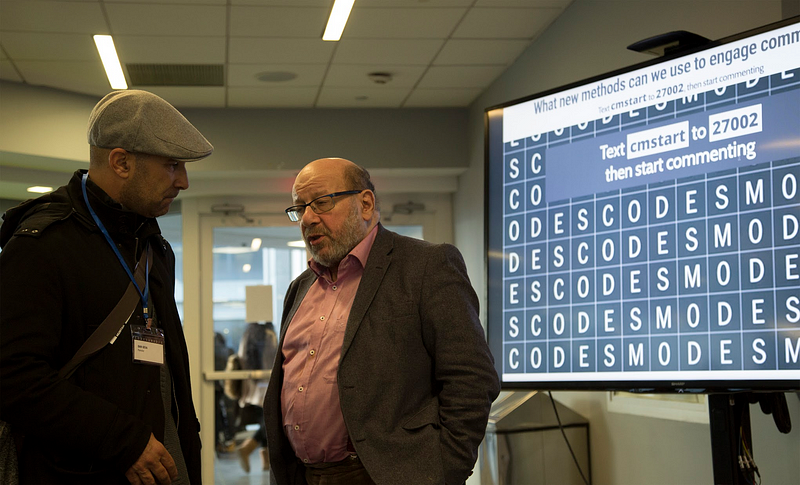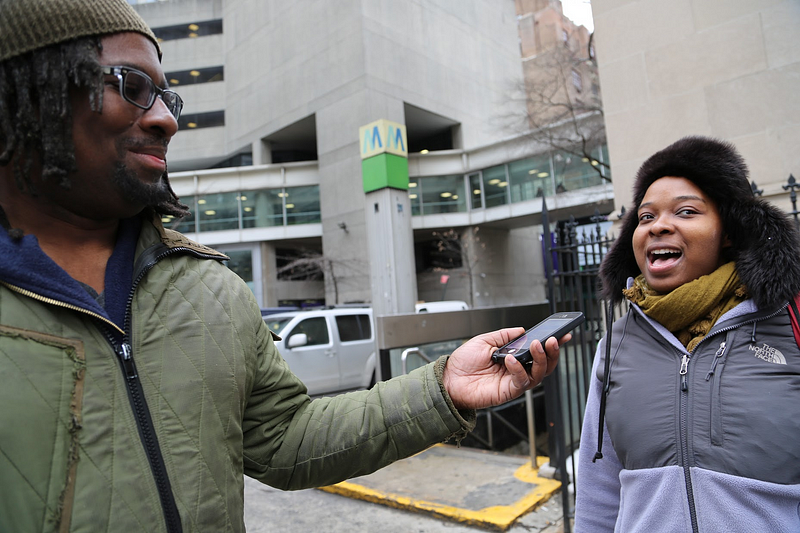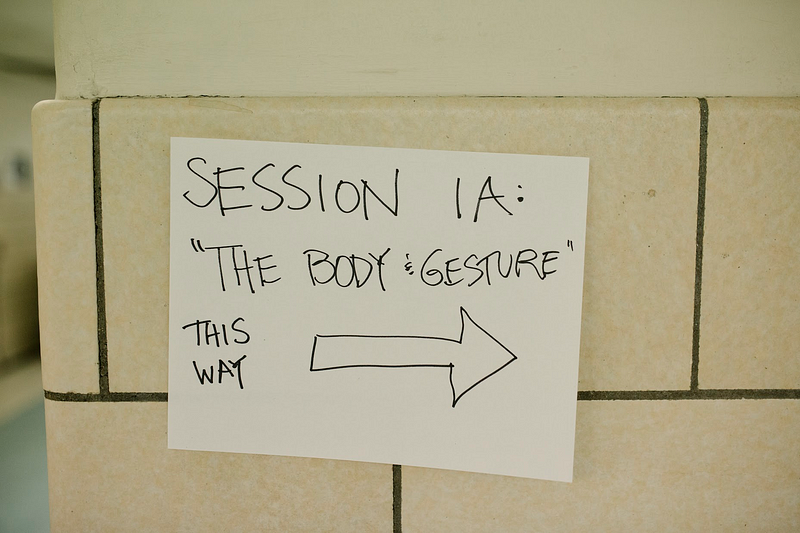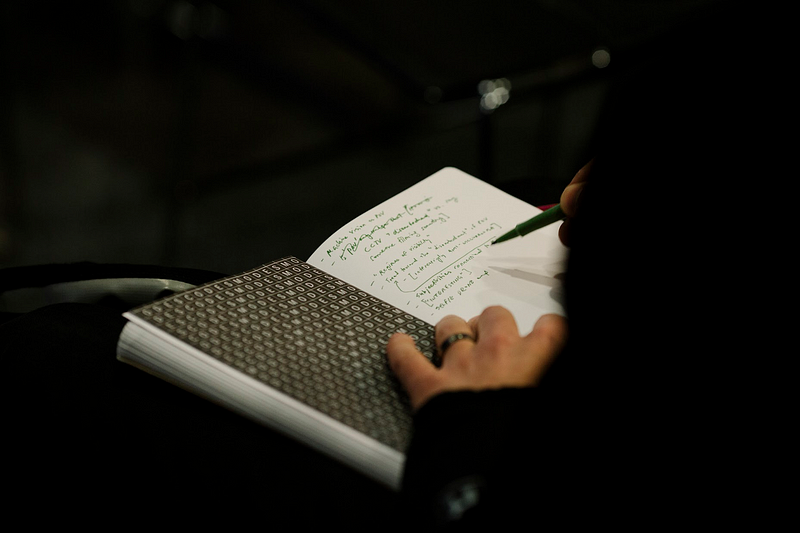
Codes & Modes Symposium
Reframing reality, virtuality and nonfiction media
 Dan Geva,
Israel-based artist & philosopher, and Brian Winston of the University of Lincoln attend the
Codes & Modes opening event.
Dan Geva,
Israel-based artist & philosopher, and Brian Winston of the University of Lincoln attend the
Codes & Modes opening event.In mid-March, the Codes and Modes symposium at Hunter College challenged uncritical responses to emerging technologies, making space for conversations about the long-term impacts of such innovations. Here, event organizers Heidi Boisvert, Andrew Demirjian and Marty Lucas round up highlights and insights:
 Halsey
Burgund led an AR Sound Workshop using Roundware, software that he developed.
Halsey
Burgund led an AR Sound Workshop using Roundware, software that he developed.Codes and Modes was designed to offer a critical dialogue around virtual reality, augmented reality, AI, and other emerging technologies. This public three-day event brought together dozens of scholars, artists, and journalists from around the world, as well as students and faculty from Hunter College, the NYC College of Technology, and other other CUNY and SUNY schools.

Because these forms and technologies engage new sensoria and create new relations of media to the human body, the discussions were wide-ranging — but loosely organized around such core themes as empathy, embodiment, algorithmic control, neurobiology, activism, and ethics.
The conference featured an exhibition of artworks that offered visitors a chance to engage with work that looked at systems of surveillance and facial recognition, as well as human rights, immigration, virtual embodiment, and local history.
Many of the works employed the very technologies they were critiquing. One stand-out was Sarah Rothberg’s piece Oops!, about the future integration of VR into the everyday, which she performs entirely inside a headset. Oops! offers an alternative to the (often male, violent, pixel-perfect, and sterile) vision of VR’s future, taking audiences through mundane tasks that VR might perform, as a playful form of social critique.

Other highlights:
- Mandy Rose, Director of the University of the West of England’s Digital Cultures Research Centre and Co-Director of I-Docs, kicked off the Symposium with a couple of key questions: Why have VR makers become so preoccupied with empathy? Should we resist Silicon Valley’s push to emphasize a limited range of the possibilities of these emerging tools?
- Another interesting debate that emerged over the three days could be termed “quantification and its discontents.” On the one hand, Dan Archer presented new research from his company, Empathetic Media, comparing AR and VR with print. This research found the new media to be game-changers with regards to increased empathy, presence, memory retention and engagement with the subject matter. In contrast, Ruben van de Ven presented a powerful presentation on the potential shortcomings of emotion analysis. Van de Ven questioned the value of emotion-sensing technologies that focus on the mechanics of the face rather than on inner sensation.
- There were also several perspectives into innovative possibilities for journalism. Niko Koppel from the New York Times discussed being able to get closer to the story with high-resolution crime-scene photoscans turned into 3D environments. Getu Ambwani from the Huffington Post provided an insightful gaze into how data science and machine learning is being enlisted to try to pop readers’ filter bubbles.
- Filmmaker and professor Jason Fox discussed the impact of new imaging sensors on the field of documentary in his presentation on “Immersion, Transparency and Presence.” In this session, we were struck by Robert Rappaport’s mention of VR filmmakers leaving the tripod in the shot as a type of “Reality Effect.” During this same panel, a single quote — “All good interventions should end with a hug” — seemed to crystallize the need for an expansive spirit of love to combat the bombast and hate-speech permeating political discourse.
- Our philosophy panel picked up on the marriage and tension between reality and virtuality. Dan Geva of Haifa University gave a passionate articulation of “the reality of the virtual” from Plato to Zizek, while artist and computer programmer D. Smudde focused on the emerging asynchronous grammar of the Internet and the desire to restore authorship. Science Technology Studies scholar Danya Glabau asked some pointed questions along these lines, “What is the normal assumed embodiment of VR, and how can we make different technical decisions that are not informed by the unconscious biases of white male (alt-right) developers?” She reminded us that the tools we use to tell our stories matter and left us wondering what emerging technology would look like through the lens of feminism.
- Finally, Daanish Masood of UN & Be Another Lab and Lina Srivastava of CIEL closed out the Symposium by offering us alternative frameworks when working in global contexts. These frameworks employ a co-design process, which involves communities on the ground in the design and development process to help insure that they are not re-traumatized by sensitive subject matter.

We plan to continue the conversation via a Slack Channel: codesmodes.slack.com.
Immerse is an initiative of Tribeca Film Institute, MIT Open DocLab and The Fledgling Fund. Learn more about our vision for the project here.